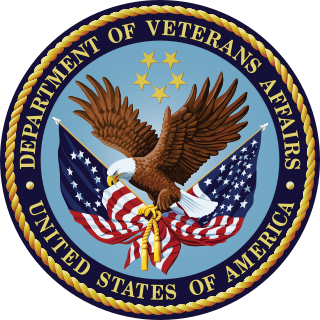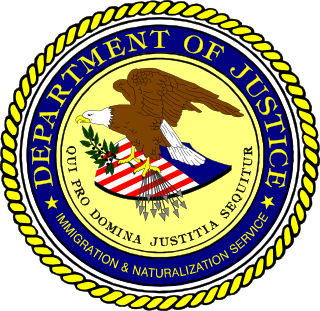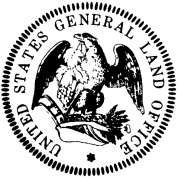Related Research Articles

The United States Department of State (DOS), or simply the State Department, is an executive department of the U.S. federal government responsible for the country's foreign policy and relations. Equivalent to the ministry of foreign affairs of other nations, its primary duties are advising the U.S. president on international relations, administering diplomatic missions, negotiating international treaties and agreements, and representing the U.S. at the United Nations. The department is headquartered in the Harry S Truman Building, a few blocks from the White House, in the Foggy Bottom neighborhood of Washington, D.C.; "Foggy Bottom" is thus sometimes used as a metonym.

The Cabinet of the United States is the principal official advisory body to the president of the United States. The Cabinet generally meets with the president in a room adjacent to the Oval Office in the West Wing of the White House. The president chairs the meetings but is not formally a member of the Cabinet. The vice president of the United States serves in the Cabinet by statute. The heads of departments, appointed by the president and confirmed by the Senate, are members of the Cabinet, and acting department heads also participate in Cabinet meetings whether or not they have been officially nominated for Senate confirmation. Members of the Cabinet are political appointees and administratively function their departments. As appointed officers heading federal agencies, these Cabinet Secretaries are bureaucrats with full administrative control over their respective departments. The president may designate heads of other agencies and non-Senate-confirmed members of the Executive Office of the President as members of the Cabinet.

The United States Department of Labor (DOL) is one of the executive departments of the U.S. federal government. It is responsible for the administration of federal laws governing occupational safety and health, wage and hour standards, unemployment benefits, reemployment services, and occasionally, economic statistics. It is headed by the secretary of labor, who reports directly to the president of the United States and is a member of the president's Cabinet.

The Department of the Treasury (USDT) is the national treasury and finance department of the federal government of the United States, where it serves as an executive department. The department oversees the Bureau of Engraving and Printing and the U.S. Mint. These two agencies are responsible for printing all paper currency and minting coins, while the treasury executes currency circulation in the domestic fiscal system. It collects all federal taxes through the Internal Revenue Service; manages U.S. government debt instruments; licenses and supervises banks and thrift institutions; and advises the legislative and executive branches on matters of fiscal policy. The department is administered by the secretary of the treasury, who is a member of the Cabinet. The treasurer of the United States has limited statutory duties, but advises the Secretary on various matters such as coinage and currency production. Signatures of both officials appear on all Federal Reserve notes.

The United States Department of Commerce (DOC) is an executive department of the U.S. federal government concerned with promoting the conditions for economic growth and opportunity.

The United States Department of the Interior (DOI) is an executive department of the U.S. federal government responsible for the management and conservation of most federal lands and natural resources. It also administers programs relating to Native Americans, Alaska Natives, Native Hawaiians, territorial affairs, and insular areas of the United States, as well as programs related to historic preservation. About 75% of federal public land is managed by the department, with most of the remainder managed by the Department of Agriculture's Forest Service. The department was created on March 3, 1849. It is headquartered at the Main Interior Building, located at 1849 C Street NW in Washington, D.C.

The United States Department of Veterans Affairs (VA) is a Cabinet-level executive branch department of the federal government charged with providing lifelong healthcare services to eligible military veterans at the 170 VA medical centers and outpatient clinics located throughout the country. Non-healthcare benefits include disability compensation, vocational rehabilitation, education assistance, home loans, and life insurance. The VA also provides burial and memorial benefits to eligible veterans and family members at 135 national cemeteries.

The United States Immigration and Naturalization Service (INS) was an agency of the U.S. Department of Labor from 1933 to 1940 and the U.S. Department of Justice from 1940 to 2003.
In the United States, a territory is any extent of region under the sovereign jurisdiction of the federal government of the United States, including all waters. The United States asserts sovereign rights for exploring, exploiting, conserving, and managing its territory. This extent of territory is all the area belonging to, and under the dominion of, the United States federal government for administrative and other purposes. The United States total territory includes a subset of political divisions.

The Bureau of Indian Affairs (BIA), also known as Indian Affairs (IA), is a United States federal agency within the Department of the Interior. It is responsible for implementing federal laws and policies related to Native Americans and Alaska Natives, and administering and managing over 55,700,000 acres (225,000 km2) of reservations held in trust by the U.S. federal government for indigenous tribes. It renders services to roughly 2 million indigenous Americans across 574 federally recognized tribes. The BIA is governed by a director and overseen by the Assistant Secretary for Indian Affairs, who answers to the Secretary of the Interior.

The Office of Insular Affairs (OIA) is a unit of the United States Department of the Interior that oversees federal administration of several United States insular areas. It is the successor to the Bureau of Insular Affairs of the War Department, which administered certain territories from 1902 to 1939, and the Office of Territorial Affairs in the Interior Department, which was responsible for certain territories from the 1930s to the 1990s. The word "insular" comes from the Latin word insula ("island").

The General Land Office (GLO) was an independent agency of the United States government responsible for public domain lands in the United States. It was created in 1812 to take over functions previously conducted by the United States Department of the Treasury. Starting with the enactment of the Land Ordinance of 1785, which created the Public Land Survey System, the Treasury Department had already overseen the survey of the Northwest Territory, including what is now the state of Ohio.

The Federal Protective Service (FPS) is a federal law enforcement agency of the United States Department of Homeland Security (DHS). It is also "the federal agency charged with protecting and delivering integrated law enforcement and security services to facilities owned or leased by the General Services Administration (GSA)"—over 9,000 buildings—and their occupants.

Federal lands are lands in the United States owned and managed by the federal government. Pursuant to the Property Clause of the United States Constitution, Congress has the power to retain, buy, sell, and regulate federal lands, such as by limiting cattle grazing on them. These powers have been recognized in a long series of United States Supreme Court decisions.

The Veterans Benefits Administration (VBA) is an agency of the U.S. Department of Veterans Affairs. It is responsible for administering the department's programs that provide financial and other forms of assistance to veterans, their dependents, and survivors. Major benefits include veterans' compensation, veterans' pension, survivors' benefits, rehabilitation and employment assistance, education assistance, home loan guaranties, and life insurance coverage.

The Federal Security Agency (FSA) was an independent agency of the United States government established in 1939 pursuant to the Reorganization Act of 1939. For a time, the agency oversaw food and drug safety, education funding, administration of public health programs, and the Social Security old-age pension plan. It became the Department of Health, Education, and Welfare in 1953.
Executive Schedule is the system of salaries given to the highest-ranked appointed officials in the executive branch of the U.S. government. The president of the United States appoints individuals to these positions, most with the advice and consent of the United States Senate. They include members of the president's Cabinet, several top-ranking officials of each executive department, the directors of some of the more prominent departmental and independent agencies, and several members of the Executive Office of the President.

Thomas H. Cripps was a native of Philadelphia, Pennsylvania who was awarded the U.S. Medal of Honor during the American Civil War. While serving in the Union Navy as a quartermaster aboard the USS Richmond, he operated one of that's ship's guns under heavy enemy fire for two hours during the Battle of Mobile Bay, Alabama on August 5, 1864, helping to damage the CSS Tennessee and destroy artillery batteries of the Confederate States Army at Fort Morgan, even as the enemy's shell and shot damaged his ship and killed several of his fellow crewmen. For those actions, he was awarded his nation's highest honor for bravery on December 31, 1864.

The United States Department of Commerce and Labor was a short-lived Cabinet department of the United States government, which was concerned with fostering and supervising big business. It existed from 1903 to 1913. The United States Department of Commerce is its successor agency, and it also is the predecessor of the United States Department of Labor.
References
- ↑ National Archives and Records Administration, p. 571.
- 1 2 Cimbala and Miller, p. 397.
- ↑ National Park Service, p. 8.
- ↑ Moeller and Feldblyum, p. 100.
- ↑ Mary R. Dearing, Veterans in Politics: The Story of the GAR (1974) online.
- ↑ Heywood T. Sanders, "Paying for the 'Bloody Shirt': The politics of Civil War pensions" in Barry S Rundquist, ed., Political Benefits: Empirical studies of American public programs (Lexington Books, 1980) pp. 137-160. online
- ↑ Secretary of the Interior, p. 78.
- ↑ Cumberbatch, p. 63.